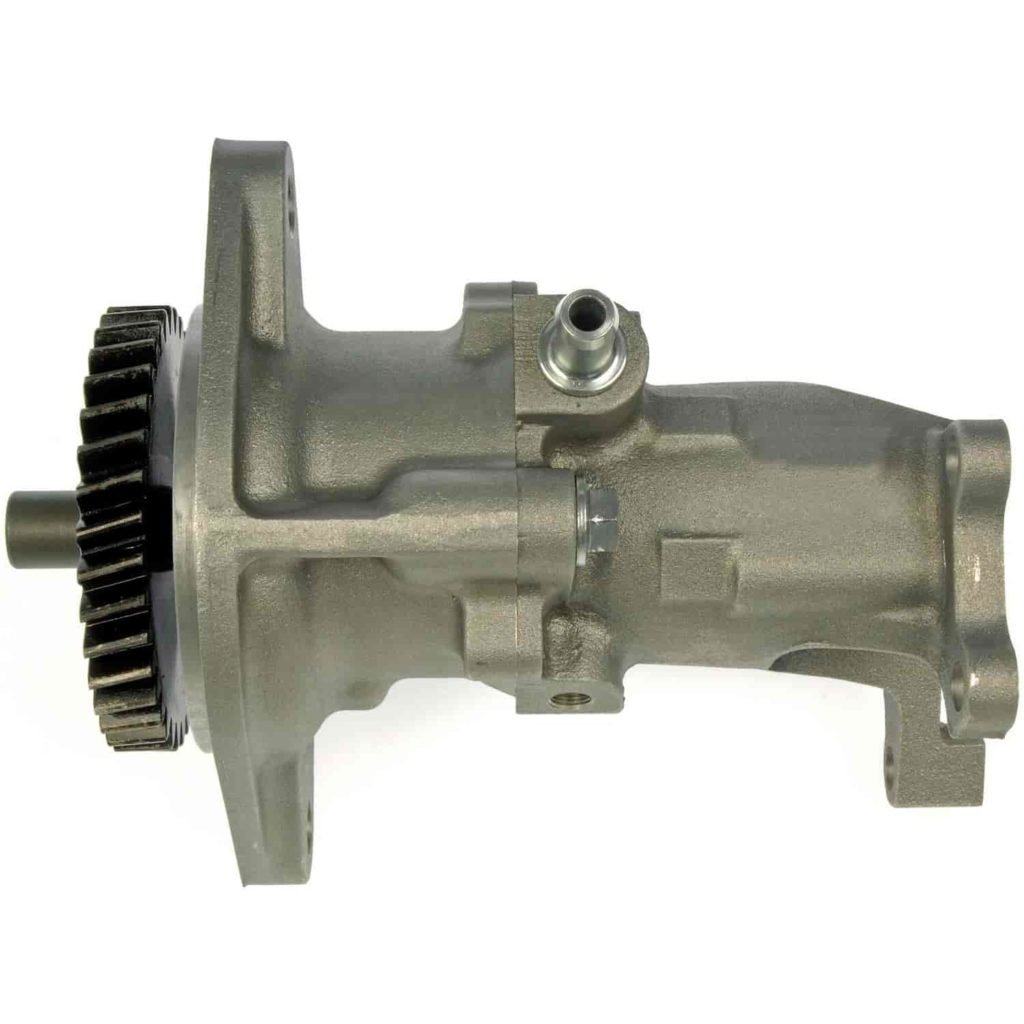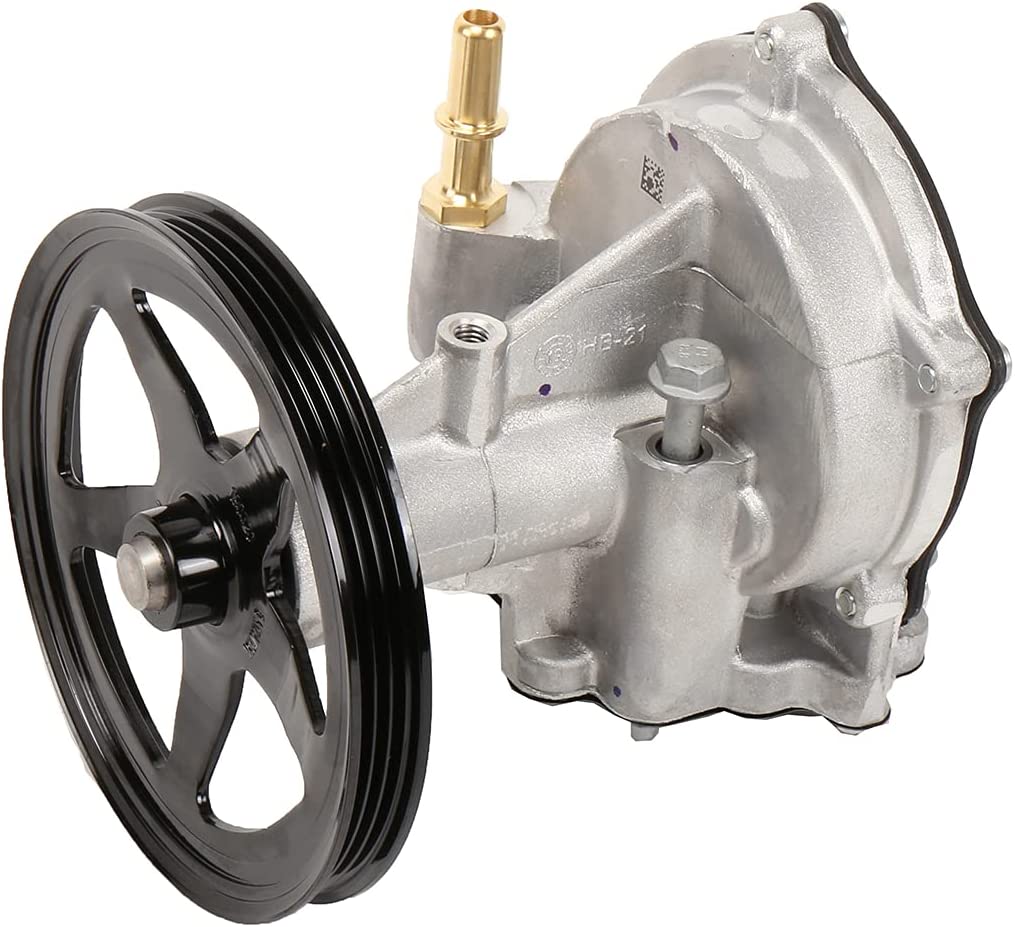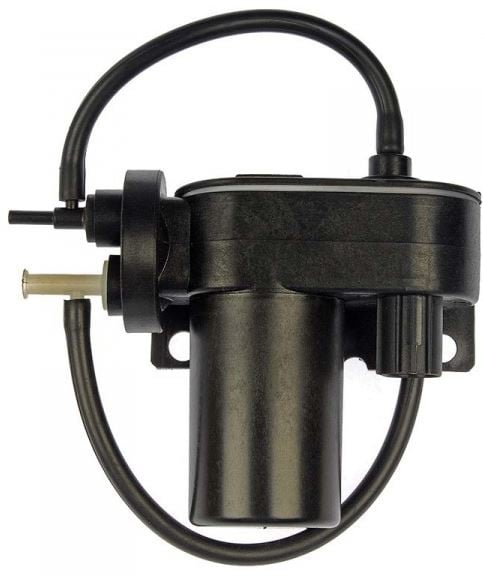Sign up now to join the JEGS email newsletter and be the first to learn about new products, special deals and e-mail only offers!


In the car enthusiast's world, there's always talk about turbos, power, suspension, wheels, tires, and similar performance parts, yet, most people underestimate the importance of other parts such as the vacuum pump.
To better understand your car, and why a vacuum pump car application is important, we’ll cover the basic information about an engine vacuum pump, what it does, what kinds of vacuum pumps are there, and much more.
The engine vacuum pump can be found in all turbocharged engines, direct injection engines, and engines with variable timing. What does a vacuum pump do in a car? It helps a number of actuators operate efficiently, including the brake booster servo, which you’ll agree, is extremely important.
The most essential part that an engine vacuum pump helps operate is the booster on power brake systems. These require constant vacuum, which is why it’s important to have a properly functioning vacuum pump.
Aside from creating a vacuum in the power brake system booster, vacuum pumps also create a vacuum in the auxiliary tank that is required for activating the turbocharger wastegate mechanism, as well as the exhaust gas recirculation (EGR) valve. Without a properly working engine vacuum pump, your car will quickly show certain fault codes in the ECU, and the check engine light will appear on the dash. In this situation, you’ll need to look for a replacement vacuum pump kit.
When it comes to vacuum pumps for cars, there are two different types: mechanical and electrical.

The mechanical engine vacuum pump is most commonly attached to the camshaft, and it uses motor oil directly for lubrication. Because they can stiffen over time and lock up timing system components, these types of vacuum pumps are slowly becoming less frequently used because they can cause major engine failure. One other reason people started avoiding this vacuum pump is maintenance due to its location that’s in most cases very hard to reach. There is a positive side to this pump as it is very quiet in operation.
Sign up now to join the JEGS email newsletter and be the first to learn about new products, special deals and e-mail only offers!

An electrical vacuum pump is a more modern counterpart to the family with its simpler design. In contrast to mechanical vacuum pumps, electric vacuum pumps nearly never need maintenance and are often considerably simpler to replace. An electric motor that simply bolts into place somewhere inside the engine compartment drives them instead of the engine itself. For just this reason, they are becoming far more widespread. The only slight drawback is that they are noisier than mechanical vacuum pumps.

The process for resealing or replacing a vacuum pump is pretty much the same. The parts and tools you’ll need usually include an engine vacuum pump or a vacuum pump seal, Torx driver set, impact driver, some oil and cleaner, and of course a towel or wipes.
When replacing or resealing a vacuum pump you first need to unscrew the bolts that hold it into place, take the line that connects to the brake booster off, and only then take off the pump itself. If you only plan on changing the seal, it's advised to clean the pump with some degreaser. The next step is putting the new O-ring which you should coat with fresh oil, and seal it into place around the groove. Once that is done it's time to put it back into place. Lubricating the wheel as well, you should carefully fit the vacuum pump back in place, secure it, and you are done.
After all that always check the car before going for a ride. Start up the vehicle, and watch for any oil leaks or weird noises.
Aside from the O-ring and the pump itself, it’s important to check the hoses as well. In most cases, the vacuum hoses will be the first component that will cause issues, and instead of replacing the entire pump, replacing vacuum hoses could resolve the issue. It’s difficult to notice a small crack in these, but given that they’re not an expensive component, they should be replaced regularly to avoid any issues.

When it comes to the question of what does a vacuum pump do in a car, it has a significant impact on the stability and efficiency of the equipment it’s connected to. But for that to happen, these pumps need to be serviced routinely. We have seen that oil plays a big part in this vehicle component when it’s a mechanically operated variety, so oil changes are included in that maintenance.
Also, before using your pump again after a few months of storage, it is recommended that you change the oil. Long periods of inactivity might cause oil to degrade, which will reduce the pump's efficiency. The engine vacuum pump can also seize after a long period of inactivity, so removing it and ensuring it’s in good condition is of the utmost importance.
After inspecting the vacuum pump car application, you should always look for high-quality replacement components. Although it’s severely underestimated, the vacuum pump plays a role in the performance and safety of a performance car.
The first thing would be to find a trustworthy supplier that has a large selection of car vacuum pumps and related components, and that’s where JEGS comes in. Find vacuum pumps from world-renowned manufacturers such as ACDelco, Aerospace Components, Bosch, Delphi, Dorman, JEGS, Moroso, Wilwood, and many more. With free delivery on orders over $99 and a few quick delivery options to choose from, JEGS is the ideal solution to solving any issues you might have with your vacuum pump. You’ll also find hundreds of other car parts in stock ready to be shipped in the fast such as oils, filters, exhaust systems, engine components, wheels, tires, batteries, and much more.



